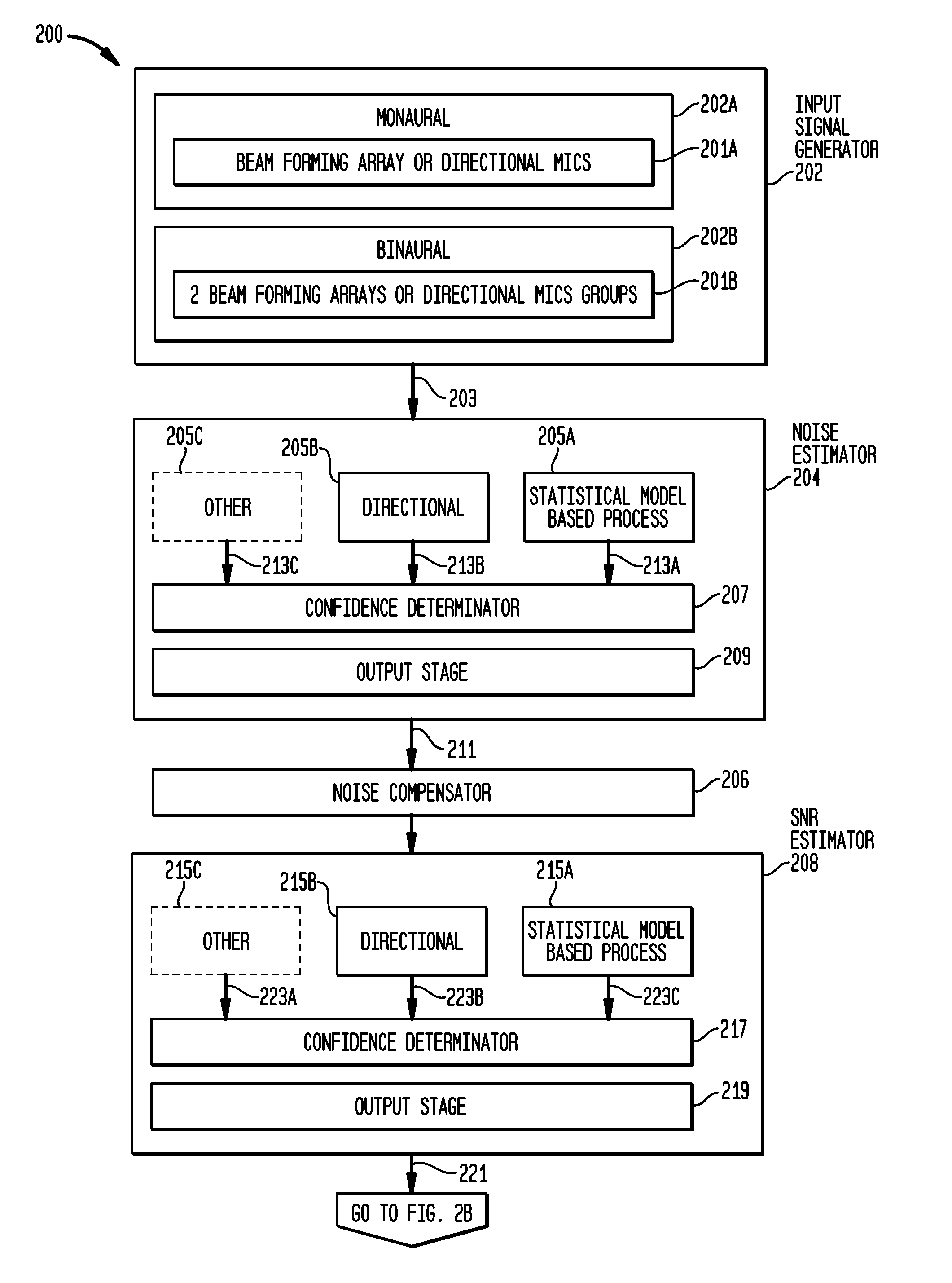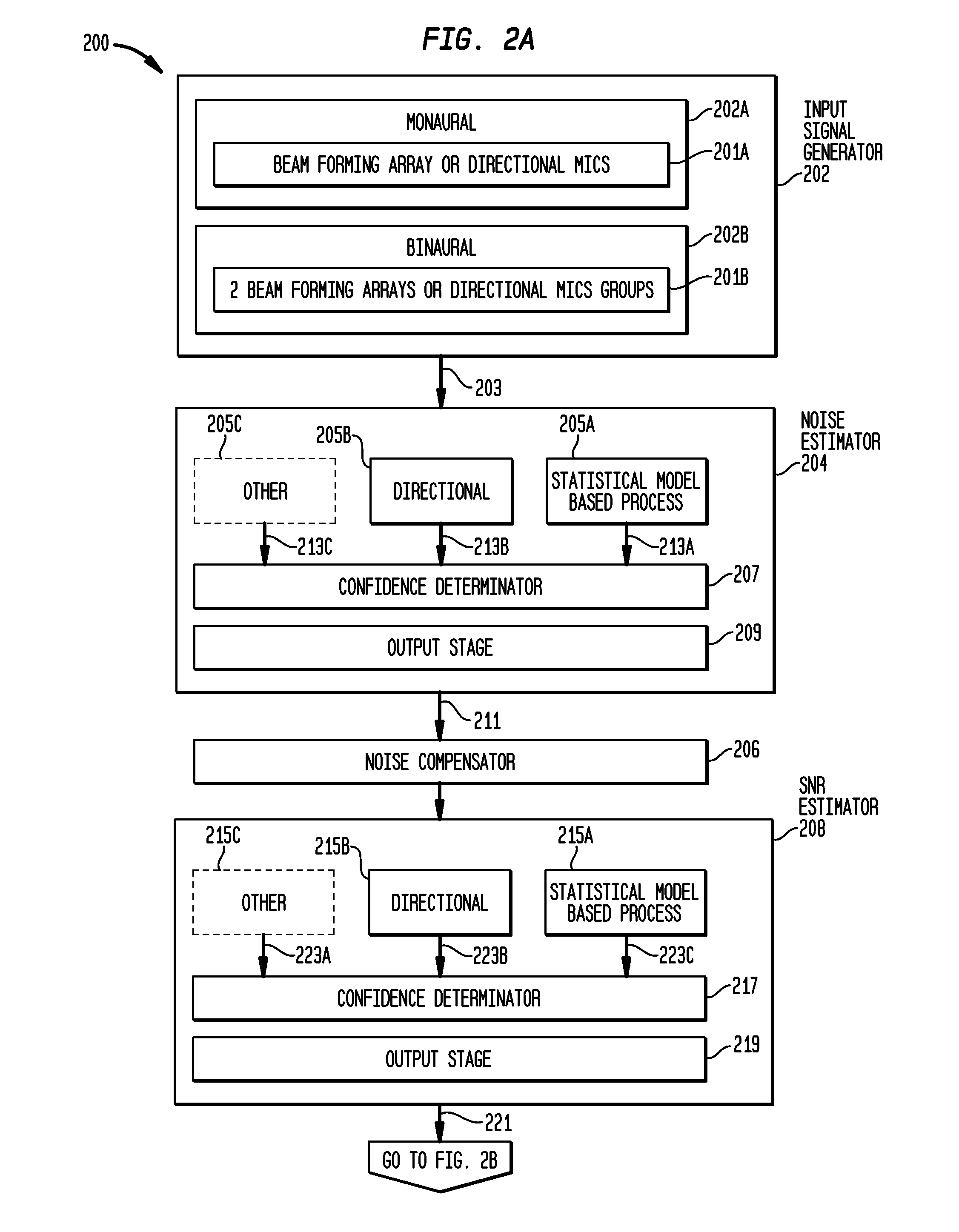Sound processing with increased noise suppression
- Summary
- Abstract
- Description
- Claims
- Application Information
AI Technical Summary
Benefits of technology
Problems solved by technology
Method used
Image
Examples
example 1
SNR-Based N of M Channel Selection in a Cochlear Implant
[0203]FIG. 16 illustrates a process 1700 for performing an n of m channel selection in a Cochlear implant, based on a signal-to-noise ratio estimate. This exemplary method may be performed by a system that includes implementations of processing blocks 202A, 205A, 215A, 235A, 235B, 235C, 235D, and 239 of FIGS. 2A and 2B.
[0204]Process 1700 begins at step 1702, by receiving a sound signal at a microphone. The output from each microphone is then used in step 1704 to generate a signal representing the received sound. This is performed in a manner similar to that described in FIG. 3. In this regard, the output of the microphone is passed to an analog-to-digital converter where it is digitally sampled. The samples are buffered with some overlap and windowed prior to the generation of a frequency domain signal. The output of this process is a plurality of frequency domain signals representing the received sound signal in a correspondin...
example 2
Combination of SNR Estimates for Noise Reduction in an Electrical Stimulation Hearing Prosthesis
[0210]FIG. 17 illustrates a process 1800 for using combined SNR estimates for noise reduction in a hearing prosthesis. A system performing this method will only require implementations of the following functional blocks illustrated in FIGS. 2A and 2B: 202B, 205A, 205B, 215A, 215B, 219, 227, 229, and 231.
[0211]Process 1800 begins at step 1802 by receiving a sound at a beam forming array of omnidirectional microphones, of the type illustrated in FIG. 3. In the next step 1804, the analog time domain signal from each of the microphones is digitized and converted to a respective plurality of frequency band signals representing the sound in the manner described above. Next, at step 1806, a directionally based noise estimate, cb, is generated at each frequency, in the manner described in connection with FIG. 5. Additionally, in step 1808, a statistical model-based noise estimate is generated in ...
PUM
 Login to View More
Login to View More Abstract
Description
Claims
Application Information
 Login to View More
Login to View More - R&D Engineer
- R&D Manager
- IP Professional
- Industry Leading Data Capabilities
- Powerful AI technology
- Patent DNA Extraction
Browse by: Latest US Patents, China's latest patents, Technical Efficacy Thesaurus, Application Domain, Technology Topic, Popular Technical Reports.
© 2024 PatSnap. All rights reserved.Legal|Privacy policy|Modern Slavery Act Transparency Statement|Sitemap|About US| Contact US: help@patsnap.com










